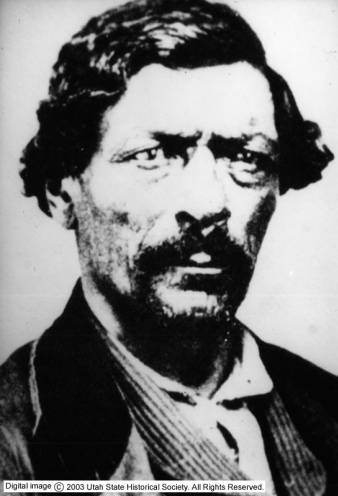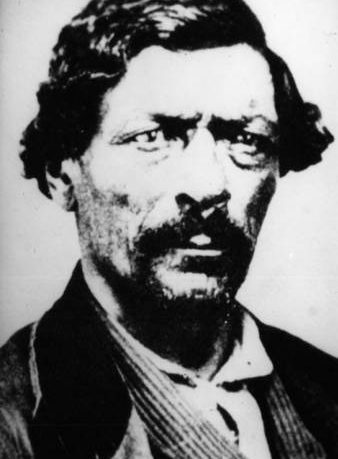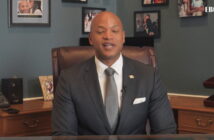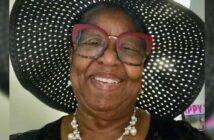By Roger House
Word in Black
Roger House speaks on the life and legacy of James P. Beckwourth. Credit: Courtesy photo

James Pierson Beckwourth is a pioneer of the American West largely erased from history lessons. Recovering his story, however, can help us to better understand current debates over historical revision versus woke education — which is to say that, if he had been White, people likely would have learned about him in school.
Beckwourth was an American original, at times a slave, miner, fur trapper, leader of the Crow Indians, Army scout and guide to the California gold mines in the 1800s. He opened a vital trading post and hotel in the Sierra Nevada mountains that became Beckwourth, Calif.
Historians have enshrined White “mountain men” like Kit Carson, Thomas Fitzpatrick and William Sublette in American folklore, but not so with Beckwourth. Because of racism, writers disparaged his feats and ridiculed his name. However, his keen observations of frontier life could spark discussions on colonial ideologies of ethnic displacement like manifest destiny, slavery and miscegenation, White settler violence against Indigenous people, and commercial exploitation of the land.
His controversial exploits were investigated by historian Elinor Wilson in 1976 in “Jim Beckwourth: Mountain Man and War Chief of the Crows.” She argued that he “was a figure suited to the making of Western legend” had it not been for his race. She found that “racial prejudice inspired much of what early writers said about his life,” and that he was branded a “gaudy liar” — even in a culture that valued the tall tale — an unfair indictment that has been recycled in contemporary times.
His accomplishments were preserved in a memoir, as well as physical landmarks, on websites, and in documentary treatments. Central is his colorful autobiography, but unlike the frontiersman Davy Crockett, students don’t learn about the “Black King of the Wild Frontier.”
Yet, his story would seem appropriate for educators today. For example, it fits with several of the topic sections in the revamped AP African American history framework issued by the College Board. The “Unit 2” sections on Black identity, freedom, autonomy and living in Indigenous territory would seem particularly relevant.
And the Beckwourth story could be a vehicle for an action movie or television treatment. In fact, his name is used teasingly for a character in the 2021 Netflix Western, “The Harder They Fall.” And there is a documentary, “Jim Beckwourth: War Chief of the Crow,” in the 2022 Apple TV series, “Into the Wild Frontier.” Surely, his story could be relevant to controversies over racial representation in Hollywood.
Beckwourth’s wild frontier
Born into slavery in about 1798 in Fredericks County, Va., Beckwourth was a product of rape and the legal property of a tobacco plantation owner. The violence shaped his racial identity in conflicting and accommodating ways. His pioneer outlook was fueled by the opportunities of the Louisiana Purchase. About 1805, his master took him to work at a St. Louis fur trading post; he was later hired out for a lead-mining expedition to Illinois on the Mississippi River.
With money earned from the mines, he returned to St. Louis to buy his freedom. His story from that point sheds light on the incorporation of the wild frontier into Western capitalism. His work as a trapper in the dangerous but lucrative fur trade is a window into the diverse people, places and cultures of the old west, and the systems of colonization and slavery that made America an economic power.
For instance, he was hired by the Rocky Mountain Fur Company to supply animal pelts for fashionable wear. At the same time, as he trekked about the frontier, his freedom was subject to challenge under the fugitive slave laws of 1793 and 1850. Like other free Black people, he lived at risk of kidnapping and enslavement; his former master testified to his legal emancipation in courts several times.
Over the years, Beckwourth gained a reputation as a skilled hunter, fur trapper and courageous mountaineer. His assignments took him to Iowa, Colorado, Utah and New Mexico. He witnessed — and participated in — skirmishes among indigenous nations and with White settlers. About 1828, he was captured by warriors of the Crow Nation in Montana.
Tribal leaders evidently saw value in his understanding of White culture, fluency in English, and bravery in combat. In the tribe, he rose to the position of a war chief. Today, his observations of their way of life before displacement by White settlers are valued as precious anthropology.
Witness to continental expansion
Beckwourth was a rare Black witness to the Seminole Nation and runaway slaves in Florida. He participated in the second of three wars from 1835 to 1842. During the conflicts, he served as a messenger delivering instructions between army forts. He observed the deadly Battle of Okeechobee on Christmas Day 1837, involving about 800 troops under the command of Col. Zachary Taylor.
Though Taylor, who later became president, proclaimed the battle a victory, many historians tend to agree with Beckwourth’s assessment that the Seminoles got the better of the fight. He recounted: “I could not see that Ok-ke-cho-be was much of a victory; indeed, I shrewdly suspected that the enemy had the advantage; but it was called a victory by the soldier, and they were the best qualified to decide.”
Beckwourth also provided insights into the opening of California during the gold rush. In 1850, he located a passage through the Sierra Nevada mountains known as Beckwourth Pass. Then, he organized a team to prepare a road for wagon trains between Reno and northern California, known as the Beckwourth Trail, which enabled thousands of settlers to reach the fertile central valley in safety — and allowed Beckwourth to achieve a measure of commercial success.
This fascinating pioneer lived to see the end of slavery; he died around 1866, shortly after the Civil War. But he never enjoyed the rights of citizenship, even though he was an authentic product of the American experience. As such, the rediscovery of his story can provide an engaging springboard for re-envisioning the wild frontier.
This article was originally published by Word In Black.



